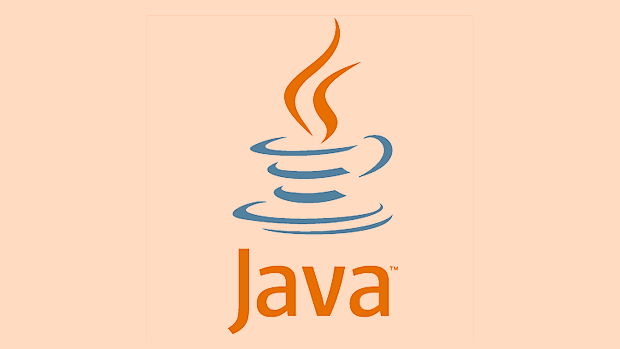JMS with ActiveMQ enables asynchronous, loosely coupled communication in enterprise applications by using messaging; this tutorial demonstrates setting up ActiveMQ and implementing a point-to-point messaging example using the JMS API. 1. JMS is a Java API supporting two models: Point-to-Point (queues) where each message is consumed once, and Publish/Subscribe (topics) where multiple subscribers receive the same message. 2. ActiveMQ is chosen as it is an open-source, lightweight message broker that supports JMS and various protocols. 3. To install ActiveMQ, download the binary, extract it, start the broker using bin/activemq start, and verify via http://ipnx.cn/link/111eaa8b2f4a91d93cd60151bd3a8328 with default credentials admin/admin. 4. Set up a Java project with Maven by adding the activemq-client dependency (version 5.17.6). 5. Create a JMSProducer that connects to tcp://localhost:61616, creates a session, sends a text message to exampleQueue, and closes resources. 6. Create a JMSConsumer that connects to the same broker, listens on exampleQueue, synchronously receives the message within a 5-second timeout, prints it, and closes the connection. 7. Run the consumer first, then the producer to observe message delivery, highlighting that queues persist messages until consumed. 8. Key JMS components include ConnectionFactory, Connection, Session, Destination, MessageProducer, and MessageConsumer. 9. Optionally, use setMessageListener for asynchronous message consumption and keep the main thread alive to prevent premature exit. 10. This foundation supports advanced features like topics, durable subscriptions, selectors, and transactions, making JMS with ActiveMQ suitable for microservices, background processing, and event-driven systems.

Java Message Service (JMS) with ActiveMQ is a powerful combination for building asynchronous, loosely coupled, and scalable enterprise applications. In this tutorial, we’ll walk through the basics of JMS, set up ActiveMQ, and build a simple producer-consumer example using the JMS API.

What is JMS?
JMS (Java Message Service) is a Java API that allows applications to create, send, receive, and read messages. It enables distributed communication between applications or components using messages. JMS supports two messaging models:
- Point-to-Point (Queue): Messages are sent to a queue. One or more consumers can listen, but each message is processed by only one consumer.
- Publish/Subscribe (Topic): Messages are published to a topic. Multiple subscribers can receive the same message.
Why ActiveMQ?
Apache ActiveMQ is an open-source message broker that implements the JMS specification. It’s lightweight, supports multiple protocols (like AMQP, MQTT, STOMP), and works well in both small and large-scale systems.

Step 1: Install and Start ActiveMQ
Download ActiveMQ
Go to http://ipnx.cn/link/7d648593ea5e08ebed0b0bc4c8071dce and download the latest binary release.-
Extract the Archive

tar -xzf apache-activemq-x.x.x-bin.tar.gz cd apache-activemq-x.x.x
Start the Broker
bin/activemq start
Verify It’s Running
Open your browser and go to:
http://ipnx.cn/link/111eaa8b2f4a91d93cd60151bd3a8328
Default login:admin/admin
Step 2: Set Up Your Java Project
You can use Maven to manage dependencies. Add the following to your pom.xml:
<dependencies>
<dependency>
<groupId>org.apache.activemq</groupId>
<artifactId>activemq-client</artifactId>
<version>5.17.6</version>
</dependency>
</dependencies>Step 3: Create a JMS Producer (Sender)
This class sends a message to a queue.
import javax.jms.*;
import org.apache.activemq.ActiveMQConnectionFactory;
public class JMSProducer {
private static final String BROKER_URL = "tcp://localhost:61616";
private static final String QUEUE_NAME = "exampleQueue";
public static void main(String[] args) {
ConnectionFactory connectionFactory = new ActiveMQConnectionFactory(BROKER_URL);
Connection connection = null;
try {
connection = connectionFactory.createConnection();
connection.start();
Session session = connection.createSession(false, Session.AUTO_ACKNOWLEDGE);
Destination destination = session.createQueue(QUEUE_NAME);
MessageProducer producer = session.createProducer(destination);
TextMessage message = session.createTextMessage("Hello from JMS Producer!");
producer.send(message);
System.out.println("Sent message: " message.getText());
producer.close();
session.close();
} catch (Exception e) {
e.printStackTrace();
} finally {
if (connection != null) {
try {
connection.close();
} catch (JMSException e) {
e.printStackTrace();
}
}
}
}
}Step 4: Create a JMS Consumer (Receiver)
This class listens for messages from the same queue.
import javax.jms.*;
import org.apache.activemq.ActiveMQConnectionFactory;
public class JMSConsumer {
private static final String BROKER_URL = "tcp://localhost:61616";
private static final String QUEUE_NAME = "exampleQueue";
public static void main(String[] args) {
ConnectionFactory connectionFactory = new ActiveMQConnectionFactory(BROKER_URL);
Connection connection = null;
try {
connection = connectionFactory.createConnection();
connection.start();
Session session = connection.createSession(false, Session.AUTO_ACKNOWLEDGE);
Destination destination = session.createQueue(QUEUE_NAME);
MessageConsumer consumer = session.createConsumer(destination);
// Synchronous receive (you can also use MessageListener for async)
Message message = consumer.receive(5000); // wait up to 5 seconds
if (message instanceof TextMessage) {
TextMessage textMessage = (TextMessage) message;
System.out.println("Received message: " textMessage.getText());
} else {
System.out.println("Received: " message);
}
consumer.close();
session.close();
} catch (Exception e) {
e.printStackTrace();
} finally {
if (connection != null) {
try {
connection.close();
} catch (JMSException e) {
e.printStackTrace();
}
}
}
}
}Step 5: Run the Example
- Start ActiveMQ (if not already running).
- Run
JMSConsumerin one terminal. - Run
JMSProducerin another. - You should see the message being sent and received.
? Tip: You can also run the consumer first, then the producer — the message will still be delivered because queues store messages until consumed.
Key Concepts Recap
- ConnectionFactory: Creates connections to the broker.
- Connection: A client’s connection to the JMS provider.
- Session: A single-threaded context for sending and receiving messages.
- Destination: Either a Queue (P2P) or Topic (Pub/Sub).
- MessageProducer: Sends messages to a destination.
- MessageConsumer: Receives messages from a destination.
Optional: Use a Message Listener (Asynchronous Consumer)
Instead of consumer.receive(), use a listener for event-driven consumption:
consumer.setMessageListener(new MessageListener() {
public void onMessage(Message message) {
if (message instanceof TextMessage) {
try {
System.out.println("Async received: " ((TextMessage) message).getText());
} catch (JMSException e) {
e.printStackTrace();
}
}
}
});?? Don’t forget to keep the main thread alive (e.g.,
Thread.sleep(Long.MAX_VALUE);) if using async.
Conclusion
You’ve now built a basic JMS application using ActiveMQ. This foundation can be extended to support topics, durable subscriptions, message selectors, transactions, and more.
JMS with ActiveMQ is ideal for decoupling microservices, handling background tasks, or implementing event-driven architectures.
Basically, once you understand the producer-consumer pattern and how to configure the connection, the rest scales naturally.
The above is the detailed content of Java Message Service (JMS) with ActiveMQ Tutorial. For more information, please follow other related articles on the PHP Chinese website!

Hot AI Tools

Undress AI Tool
Undress images for free

Undresser.AI Undress
AI-powered app for creating realistic nude photos

AI Clothes Remover
Online AI tool for removing clothes from photos.

Clothoff.io
AI clothes remover

Video Face Swap
Swap faces in any video effortlessly with our completely free AI face swap tool!

Hot Article

Hot Tools

Notepad++7.3.1
Easy-to-use and free code editor

SublimeText3 Chinese version
Chinese version, very easy to use

Zend Studio 13.0.1
Powerful PHP integrated development environment

Dreamweaver CS6
Visual web development tools

SublimeText3 Mac version
God-level code editing software (SublimeText3)

Hot Topics
 What is the `enum` type in Java?
Jul 02, 2025 am 01:31 AM
What is the `enum` type in Java?
Jul 02, 2025 am 01:31 AM
Enums in Java are special classes that represent fixed number of constant values. 1. Use the enum keyword definition; 2. Each enum value is a public static final instance of the enum type; 3. It can include fields, constructors and methods to add behavior to each constant; 4. It can be used in switch statements, supports direct comparison, and provides built-in methods such as name(), ordinal(), values() and valueOf(); 5. Enumeration can improve the type safety, readability and flexibility of the code, and is suitable for limited collection scenarios such as status codes, colors or week.
 What is the interface segregation principle?
Jul 02, 2025 am 01:24 AM
What is the interface segregation principle?
Jul 02, 2025 am 01:24 AM
Interface Isolation Principle (ISP) requires that clients not rely on unused interfaces. The core is to replace large and complete interfaces with multiple small and refined interfaces. Violations of this principle include: an unimplemented exception was thrown when the class implements an interface, a large number of invalid methods are implemented, and irrelevant functions are forcibly classified into the same interface. Application methods include: dividing interfaces according to common methods, using split interfaces according to clients, and using combinations instead of multi-interface implementations if necessary. For example, split the Machine interfaces containing printing, scanning, and fax methods into Printer, Scanner, and FaxMachine. Rules can be relaxed appropriately when using all methods on small projects or all clients.
 Asynchronous Programming Techniques in Modern Java
Jul 07, 2025 am 02:24 AM
Asynchronous Programming Techniques in Modern Java
Jul 07, 2025 am 02:24 AM
Java supports asynchronous programming including the use of CompletableFuture, responsive streams (such as ProjectReactor), and virtual threads in Java19. 1.CompletableFuture improves code readability and maintenance through chain calls, and supports task orchestration and exception handling; 2. ProjectReactor provides Mono and Flux types to implement responsive programming, with backpressure mechanism and rich operators; 3. Virtual threads reduce concurrency costs, are suitable for I/O-intensive tasks, and are lighter and easier to expand than traditional platform threads. Each method has applicable scenarios, and appropriate tools should be selected according to your needs and mixed models should be avoided to maintain simplicity
 Differences Between Callable and Runnable in Java
Jul 04, 2025 am 02:50 AM
Differences Between Callable and Runnable in Java
Jul 04, 2025 am 02:50 AM
There are three main differences between Callable and Runnable in Java. First, the callable method can return the result, suitable for tasks that need to return values, such as Callable; while the run() method of Runnable has no return value, suitable for tasks that do not need to return, such as logging. Second, Callable allows to throw checked exceptions to facilitate error transmission; while Runnable must handle exceptions internally. Third, Runnable can be directly passed to Thread or ExecutorService, while Callable can only be submitted to ExecutorService and returns the Future object to
 Best Practices for Using Enums in Java
Jul 07, 2025 am 02:35 AM
Best Practices for Using Enums in Java
Jul 07, 2025 am 02:35 AM
In Java, enums are suitable for representing fixed constant sets. Best practices include: 1. Use enum to represent fixed state or options to improve type safety and readability; 2. Add properties and methods to enums to enhance flexibility, such as defining fields, constructors, helper methods, etc.; 3. Use EnumMap and EnumSet to improve performance and type safety because they are more efficient based on arrays; 4. Avoid abuse of enums, such as dynamic values, frequent changes or complex logic scenarios, which should be replaced by other methods. Correct use of enum can improve code quality and reduce errors, but you need to pay attention to its applicable boundaries.
 Understanding Java NIO and Its Advantages
Jul 08, 2025 am 02:55 AM
Understanding Java NIO and Its Advantages
Jul 08, 2025 am 02:55 AM
JavaNIO is a new IOAPI introduced by Java 1.4. 1) is aimed at buffers and channels, 2) contains Buffer, Channel and Selector core components, 3) supports non-blocking mode, and 4) handles concurrent connections more efficiently than traditional IO. Its advantages are reflected in: 1) Non-blocking IO reduces thread overhead, 2) Buffer improves data transmission efficiency, 3) Selector realizes multiplexing, and 4) Memory mapping speeds up file reading and writing. Note when using: 1) The flip/clear operation of the Buffer is easy to be confused, 2) Incomplete data needs to be processed manually without blocking, 3) Selector registration must be canceled in time, 4) NIO is not suitable for all scenarios.
 Exploring Different Synchronization Mechanisms in Java
Jul 04, 2025 am 02:53 AM
Exploring Different Synchronization Mechanisms in Java
Jul 04, 2025 am 02:53 AM
Javaprovidesmultiplesynchronizationtoolsforthreadsafety.1.synchronizedblocksensuremutualexclusionbylockingmethodsorspecificcodesections.2.ReentrantLockoffersadvancedcontrol,includingtryLockandfairnesspolicies.3.Conditionvariablesallowthreadstowaitfor
 How Java ClassLoaders Work Internally
Jul 06, 2025 am 02:53 AM
How Java ClassLoaders Work Internally
Jul 06, 2025 am 02:53 AM
Java's class loading mechanism is implemented through ClassLoader, and its core workflow is divided into three stages: loading, linking and initialization. During the loading phase, ClassLoader dynamically reads the bytecode of the class and creates Class objects; links include verifying the correctness of the class, allocating memory to static variables, and parsing symbol references; initialization performs static code blocks and static variable assignments. Class loading adopts the parent delegation model, and prioritizes the parent class loader to find classes, and try Bootstrap, Extension, and ApplicationClassLoader in turn to ensure that the core class library is safe and avoids duplicate loading. Developers can customize ClassLoader, such as URLClassL







